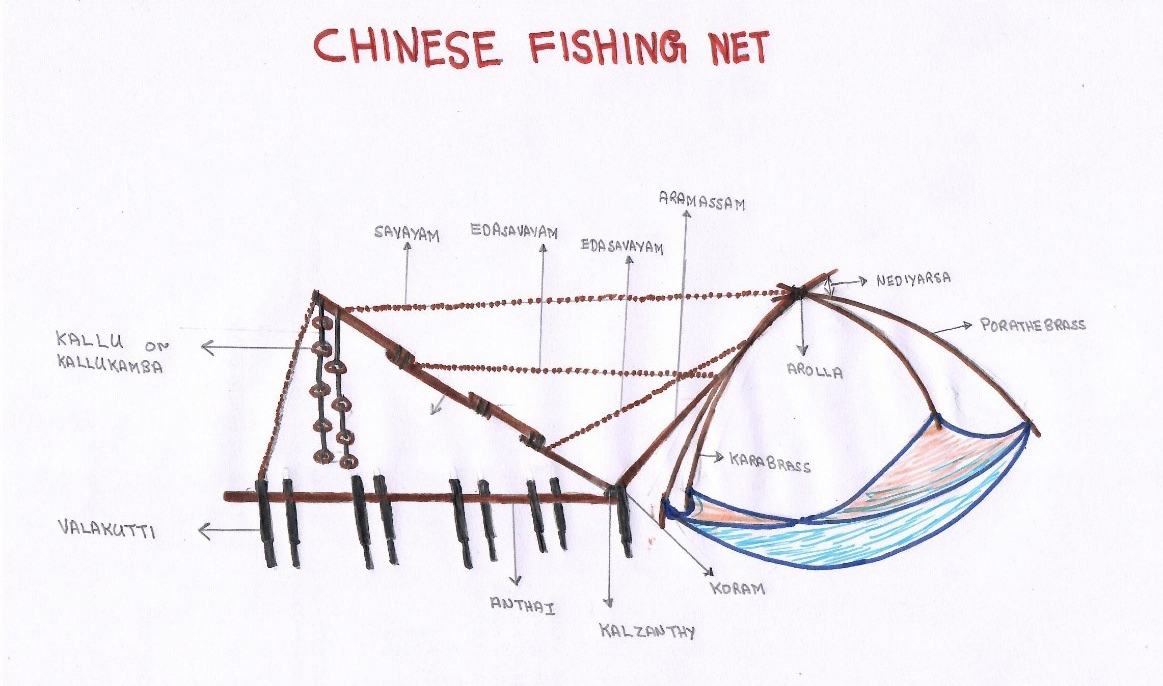
How Chinese Fishing Nets came to Cochin :
Why Chinese, and what is the connection? One may ask! The backdrop of this lies in the intense rivalry between Calicut and Cochin during the 14th century. The port at Kozhikode was economically and politically in a superior position compared to other ports at Kannur, Cochin, and Kollam, but Cochin was emerging as its main rival and the Zamorin of Calicut was keen on conquering Cochin. A wedge in the form of a Chinese expedition comes to keep these warring regions at bay. This opens the door to understanding a bit of the Ming treasure voyages.
The Ming treasure voyages were the seven maritime expeditions undertaken by Ming China’s treasure fleet between 1405 and 1433. The Yongle Emperor ordered the construction of the treasure fleet in 1403. The grand project resulted in far-reaching ocean voyages to the coastal territories and islands in and around the South China Sea, the Indian Ocean, and beyond. Admiral Zheng He was commissioned to command the treasure fleet for the expeditions. Six of the voyages occurred during the Yongle reign (1402–24), while the seventh voyage occurred during the Xuande reign (1425–1435). The first three voyages reached Calicut on India’s Malabar Coast, while the fourth voyage went as far as Hormuz in the Persian Gulf. In the last three voyages, the fleet traveled up to the Arabian Peninsula and East Africa.
During the fifth Ming treasure voyage, Admiral Zheng He was instructed to confer a seal upon Keyili of Cochin and enfeoff (put in legal possession) a mountain in his kingdom as the Zhenguo Zhi Shan (鎮國之山, Mountain Which Protects the Country). So, the Ming Dynasty of China decided to intervene by granting special status to Cochin and its ruler, known as Keyili (可亦里) to the Chinese. Zheng He, delivered a stone tablet, inscribed with a proclamation composed by the Yongle Emperor himself, to Cochin. As long as Cochin remained under the protection of Ming China, the Zamorin of Calicut was unable to invade Cochin and a military conflict was averted.
The visit of Admiral Zheng He, is the most likely cause of these nets being introduced to Cochin as these nets were widely used in Southern China. Locally known as ‘Cheena Vala’ (Chinese Net), these huge cantilevered fishing nets are believed to have been brought to Cochin sometime between 1400 and 1450. They have become one of the most significant symbols of Cochin.
Operated from the shore, these nets are set up on bamboo and teak poles and held horizontally by a huge wooden roller that acts as the pivot for the huge net and counter-weighted by huge stones hung on ropes. The counterweight is always lower than the forward weight of the entire forward structure. Once the net is dipped in the water for between 10-15 minutes it is then pulled up, by usually four men, pulling down the four ropes tied to the apex of the pivot. This is an energy-sapping exercise by men, lean and sun-dried, muscles ripped as ropes, bunched to define every muscle. These four-man crew for each net drew the nets at least 80-90 times during the incoming tides.
These fishing nets have been in use for the last 500 years and they are one of the biggest tourists draws in Kerala. They are vanishing fairly quickly from the coastline of Cochin due to high maintenance costs and diminishing catch, even though many of them have mechanized the part where men used to pull up the nets.
There used to be ten Chinese Fishing Nets along the shores of Fort Cochin and each of them had a name and if we start with the first fishing net, which is located in front of the Bus stand/Corporation office and move towards the west, the order will be:
- Bank Vala
- Society Vala
- Society Vala (Not existing now)
- Karipra Vala
- Kochu Vala
- Panka Vala
- Micheal Vala (Not existing now)
- Karadi Vala
- American Vala
- Palam Vala
